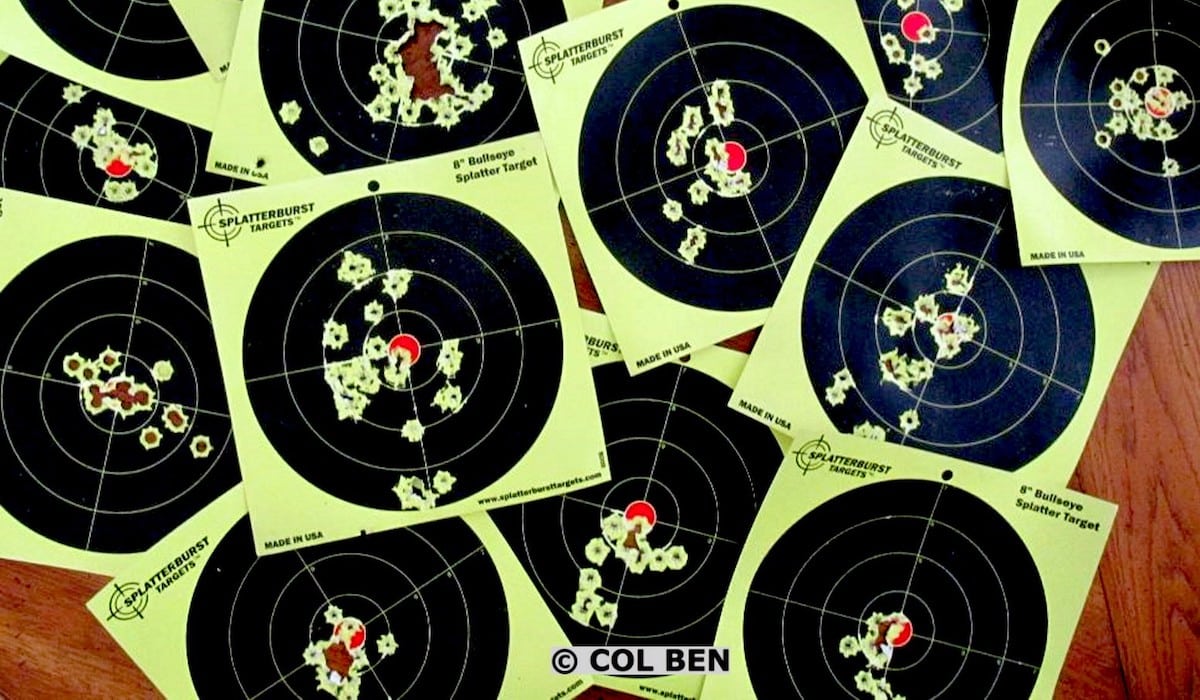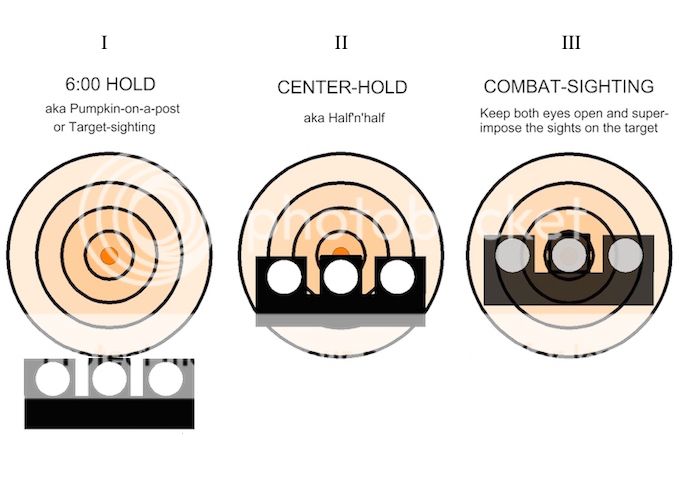Everybody's got their own preferences and experiences.

Your choice of sights and loads may have an influence.
Since one of the drills I use at 4-7yds involves shooting small wooden clothespins, I have to have a decent grasp of POA/POI using the sights. To help reduce any reliance on any amount of vertical or horizontal 'slop', I position the clothespins at 3 different orientations around the edge of the cardboard backing. Vertical, horizontal and a 45 degree angle.
Presuming you aim at the
middle of the clothespin:
Vertical allows a little wiggle room for front sight elevation technique.
Horizontal allows a little wiggle room for windage error.
The angled pin? It requires you aim
exactly at the POI, no matter where on the pin you decide to aim, as there's no wiggle room for either elevation of windage error. Gotta hit the exact spot, which means you have to have a precise sight picture and understanding of how your sights are regulated.
I used to us this drill to help other LE firearm instructor work on understanding and refining their POA/POI, as well as making sure their grip and trigger press control wasn't affecting their ability to maintain a proper sight alignment/picture follow-through throughout their trigger press.
It was especially helpful in refining the use of the basic fixed irons on snub revolvers. Easier for most of the instructors when they were able to use their favorite sight setups (dots, NS, fiber opt, all black, whatever). Confidence and experience, etc. The trick was to figure it out so they could exchange and use a different gun with different sights and still get their hits.
Most of the younger instructors who weren't around for the revolver days of LE have become quite used to the variable - and better - sighting options available for pistols nowadays, although the growing prevalence of RDS on duty weapons is introducing another factor. Hopefully, proper training for RDS-equipped guns will continue to require emphasis and the ability to default to the sights in the event the RDS becomes inop. Time will tell. Training can be ... variable.








